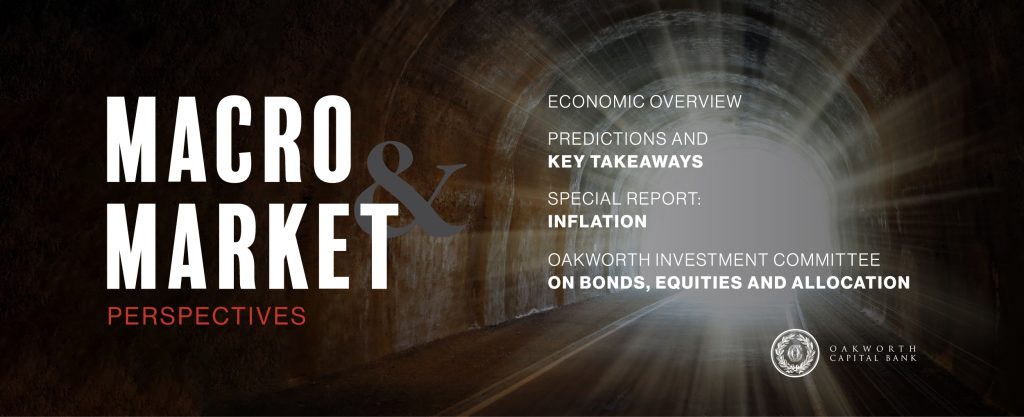After a confusing 2022, everyone hoped things would get back to some sense of normalcy in 2023. Here we are at the end of 1st quarter, and folks are still hoping and waiting. The data continues to paint a somewhat confusing picture. The only thing that seems certain is a worst-case economic scenario doesn’t seem likely, at least not now.
The primary reason for this is the continued strength in the labor markets. For all intents and purposes, if you want a job, you can have one. It might not be the job of your dreams, but it will be a paycheck nonetheless. To that end, the Bureau of Labor Statistics (BLS) announced there was an astounding 10.824 million job openings in the U.S. economy during January.
ENORMOUS NUMBER OF JOBS NEEDING WORKERS
To put this number into perspective, that is slightly more than the entire population of North Carolina. Or, it is equal to the combined populations of Tennessee and Mississippi, or twice the population of Alabama. Take your pick.
Obviously, that is a lot of potential work opportunity for someone, anyone, if they are willing to show up. Trust me, there are a lot of frustrated employers in the country. Further, that level of openings suggest companies are still reasonably confident about their business. Why else would they be looking for workers? Perhaps even more impressive, especially after the Fed’s rate hikes over the past 12 months, the economy added 504K net, new payroll jobs in January and other 311K in February. These would be good numbers during the middle of an economic expansion, let alone in what should be the end of the cycle. Companies should
currently be looking to reduce headcount, not add to it, right?
One would think; however, what is the old expression? Never look a gift horse in the mouth?
You see, when the economy is creating jobs, it is creating paychecks. When it creates paychecks, it is creating consumers. This is important, because “personal consumption expenditures” constitute roughly 68% of the Gross Domestic Product (GDP) equation. As such, it is fair to say “how goes the American consumer is how goes the U.S. economy.” Taking it one step farther, you could add “how goes the U.S. labor market is how goes the U.S. consumer” to make the statement complete.
Still, if there is something consumers don’t like, it is inflation. Unless you haven’t been to the store, shopped online, read the news or watched the television over the past five quarters, you know things cost more now than they did. Shoot, at one point in 2022, the trailing 12-month Consumer Price Index (CPI) topped out at 9.1%. That was the highest level since the early 1980s.
IS THE HIGHEST INFLATION IN DECADES COMING DOWN?
While this calculation had cooled to 6.0% by the end of February 2023, inflation remained too high for anyone’s liking during the 1st quarter.
The question remains: How much longer will these uncomfortably high price increases continue?
Fortunately, the probable scenario is the 12-month CPI will continue to fall during the upcoming quarter. You don’t need a crystal ball to make that prediction. All you need to do is scour through some data and understand how the game is played.
- First: the U. S. dollar remains very strong relative to other major trading currencies. Historically, there has been a strong negative correlation between the dollar and inflation. After all, a strong U. S. currency should mean lower import and commodities prices for U. S. consumers and producers.
- Second: businesses are not adding to their inventories at the same pace as they were in 2022. One reason is personal consumption expenditures have stabilized
after a torrid pace in 2021 and the first part of last year. Another is that businesses don’t want to finance extra inventory at today’s higher interest rates. - Third: the money supply in the U.S. economy, as defined by the M2 index, has actually been falling recently (see chart on next page). To be sure, this isn’t an evaporation like it was during the Great Depression. Far from it. However, less money sloshing about the economy, or even stagnant levels, should lead to lower prices. At least they should, as less money is chasing the same level of goods and services.
- Finally, and this is knowing how the game is played, is how the BLS calculates the 12-month CPI. It is nothing more than the product of the previous 12 months. You multiply each month by the next for a year, and voila. It is nothing more than that. So, each month you get to replace an old number with a new number. It really is that simple.
THE MONEY SUPPLY (M2) DOESN’T FALL VERY OFTEN, DOES IT?
Moving forward, the CPI was 1.0% during March 2022. It was 0.4% during April 2022 , 0.9% in May of last year and a whopping 1.2% in June 2022. As such, over the next four months, the U. S. economy will likely replace most, if not all, of those numbers with something lower. Some months might even be substantially lower. As a result, by definition the product of the previous 12 months will fall.
That does NOT mean prices are coming down. At least, not in a meaningful way. However, even a slowing in the rate of price increases should benefit consumer spending.
It also means the Federal Reserve might be able to stop raising the overnight lending target rate and put an end to this tightening cycle. This would be good not only for the consumer and borrowers, but it would also greatly benefit the banking system. During the 1st quarter, several notable banking institutions essentially collapsed. To the average person, these probably came as something of a surprise. Further, they begged the question, does this signal a return to 2008? Fortunately, the answer to that is probably no.
The underlying causes for the recent hiccup in the banking system are the inflation the powers that be created and their attempts to kill it. As the CPI has climbed, so have interest rates, since they are little more than the cost of money in the economy. Unfortunately, due to their inverse relationship, higher interest rates always lead to lower bond prices. This is important.
Banks own a lot of bonds, many of which they must reflect on their balance sheet at a true market price. Therefore, lower bond prices have led to a compression in overall bank assets. Obviously, this is a problem since the accounting is: bank assets = bank liabilities + bank equity. So, if the asset side of a bank ’s balance sheet falls due to higher interest rates but liabilities stay the same, equity decreases. When this happens, banks slow, or stop, lending money.
Therefore, intuitively, inflation and the higher interest rates associated with it have had a negative impact on bank equity. It wouldn’t take much more than a proverbial “run on the banking system” to cause major headaches. Banks would have to sell securities at a loss to cover outflows, which would lead to the permanent erosion of capital, and things would unravel.
Fortunately, this probably won’t happen.
The primary reason is the banking system, as a whole, is still flush with cash.
Consider the following. The Federal Reserve’s weekly H.8 report showed the combined banking system at a whopping $3.4 trillion in “cash assets.” It had another $593 billion in other forms of short-term liquidity, excluding Treasury Bills. As a result, the system as a whole has essentially $4 trillion in cash with which to meet withdrawals. Frankly, I can’t imagine an economic scenario other than complete ruin where there would be that sort of run on the system.
BANK CASH DOWN A LITTLE BUT STILL EXTREMELY HIGH
That isn’t to say we won’t see any more domestic bank failures; we likely will since interest rates will remain higher than they were prior to 2022. However, these will be smaller firms that aren’t what the Fed would describe as Systemically Important Financial Institutions. If not failures, I strongly suspect we will see an enormous amount of consolidation among small banks. According to bankingstrategist.com, there were 2,954 banking institutions in the United States with under $500 million in assets during the 4th quarter of 2022. It is almost impossible to imagine higher interest rates won’t make a huge dent in this number. After all, it is entirely plausible the erosion in many of these firms’ bond portfolios has decimated what little capital they had. As a result, they have little to no money to lend, and
that is what banks are supposed to do.
All of this leads to the following observation about the U.S. economy in the 1st quarter of 2023: It wasn’t as pretty as we would like, but we lived through it.
• The U.S. consumer, while slightly weaker due to higher prices, remains pretty resilient in aggregate.
• Inflation should be coming down for a variety of reasons over the next several months. If nothing else, the math will work in our favor.
• Finally, the banking system, in aggregate, remains very liquid even as some banks struggle through the remainder of the year.
Combined, it is difficult to imagine the Fed continuing to be as aggressive as it has been over the past five quarters. Frankly, it is impossible for me. That does NOT mean it will start cutting rates over the next quarter or two, and I suspect it won’t. However, simply sitting on the proverbial sidelines for the time being would be a very prudent course of action. It would give smaller, weaker banks a respite from the attack on their balance sheets. It would also give the economy the ability to better plan for the future.
Essentially, the future strength of the U.S. economy in 2023 is almost completely in the Fed’s hands. It can continue to be aggressive in crushing inflation numbers, which are coming down anyhow, and flatten the economy. That, or it can slow its roll and attempt to manufacture the nearly mythical “soft landing.”
Unfortunately, even that might be a neat trick, given the length of time the yield curve has been inverted. This is when
short-term borrowing costs are higher than long-term lending prices. Historically, lending slows and economic activity slows when this happens. However, this does NOT mean these things come to a complete halt. They don’t and they won’t.
THE INVERTED U.S. TREASURY YIELD CURVE, MARCH 30, 2023
.
Again, the banking system remains very liquid. Inflation is coming down. The labor market is surprisingly robust. We hope the Fed will be done raising rates. All of it.
In closing, a best-case scenario of robust economic activity from this point through the remainder of the year is highly unlikely. After all, people are more worried about a recession than they are excited about an expansion. Conversely, a sharp recession, a return to 2008 if you will, is almost
equally unlikely due to the reasons I have already given. As such, the probable scenario is another confusing quarter of mixed economic data in the 2nd quarter of 2023.
After waiting as long as we have for normalcy, what’s another quarter?
For more from our Investment Committee in our 1st Quarter 2023 Macro & Market Perspectives, click the image below.




